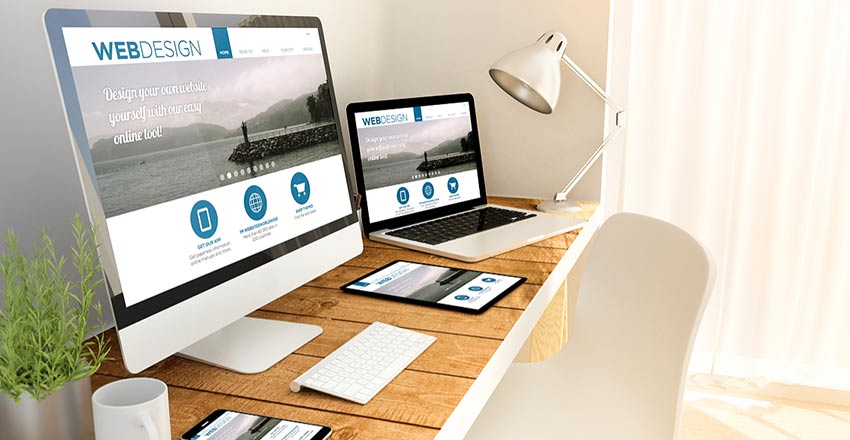Following modern web design trends is a great way to keep your website looking fresh and interesting in a rapidly evolving digital world. Every year we see new technology and new design trends become more popular. With this in mind, I’ve done extensive research to come up with a list of the top modern website design features of 2019. From this list, I’ve put together a list of my top five tips for building a modern website in 2019. These include: 1. Consider Using 3D Illustrations Although 3D illustration isn’t a technique that we often associate with the internet and web design, it actually works very well. Ever-improving design technology means that it’s easier than ever to build attractive 3D designs, and it’s something I’d recommend considering for your website.

If you have ever seen or heard any advice on SEO, backlinks will undoubtedly be mentioned. While it is true that having backlinks to your website from other sites can play a significant role in boosting your rankings, it is also the case that the linking structure you have within your website is important too. Creating links within your website has several SEO advantages, and if it is done correctly, the benefits can mount because it helps those visiting your website navigate it more easily. The advantage of this is that they have a positive experience and are likely visit your site again. More than that, they may recommend your website to others, a premium free traffic source. Navigating your website with ease will also make visitors more likely to take action while they are there, such as subscribing to your email list or, better still, purchasing something. You should know by now that Google rewards websites whose visitors stay for longer. Visitors being able to navigate easily through your website is certainly going to help achieve that objective. These reasons are primarily why you should consider how the linking structure you are putting in place improves your site’s navigation ahead of the specific SEO elements, such as improving page ranking. Google’s algorithm will adjust your ranking up or down to a greater degree based on the visitor data it receives, more than whether one of your pages has a link to it or not. The best way to start improving your website’s link structure is to plan it properly; doing this visually is preferable. You do not need to be good at drawing, as all you need is to be able to represent the pages of your website with circles or squares and then use lines to represent each link. An even better way is to download free mind map software and use that, as you can edit and save your link structure when changes occur.

Responsive Web Design seems like nothing more than a fancy new buzzword being floated around a lot these days but really it is just talking about a concept that is simple in nature. It is all about making sure that everything on your website functions optimally across all the major devices through which people are accessing the internet nowadays. From the onset of the first iPhone back in 2007 to this day, the number of people using the internet through their phones has increased massively. Fast forward to 2018, the number of internet users through mobile has surpassed the number of internet users from desktop computers. This is why the aspect of Responsive Web Design isn’t just a new term, it is a necessary concept that needs to be adopted by every business. Here is a look at the 4 reasons why you need responsive web design. Good for SEO Rankings One of the foremost reasons why businesses even have websites is to leverage the power of the internet and gain relevant exposure to an online audience. Keeping that in mind, they know that ranking high on SEO is crucial for their success. The best search engine is Google and there is little left to debate that fact. The primary focus for Google is to provide the best possible user experience to people using their platform. That’s why Google evaluates your website based on the usability of your website through a varying range of devices. Having a responsive web design makes your website easily accessible across all devices and the top results from any Google search have that part of their web design sorted out.

Branding is often regarded as nothing more than having a good logo and a catchy tagline. However, nothing could be further from the truth, especially regarding SEO. Effective branding can positively impact your SEO and ranking, just as poor branding can have a negative impact. With Google increasingly seeking to base their search engine results on user experience, it is no longer just enough to focus on the technical elements of SEO. By these, we mean things like anchor text, meta tags and keyword density, measured by crawlers and algorithms, and not real people. You also need to consider how your website appeals to those visiting. For example, do they stay on the website for some time, click through to other pages, or are they just there fleetingly and clicking away almost immediately? These are important to consider because data like this allows Google to measure how good or bad your website is about user experience. While there are specific actions you can take to improve this, such as increasing page load speed and adding more interesting content, you can also impact them by improving the branding of your website. Google has always regarded big brands as more desirable than nonentities, and while it may not be possible for you to compete with a global mega-brand, you can still impact your ranking by making your brand the best it can be. Google sees branding as a trust factor, and this is influencing their search results in ever-increasing ways.

At the very thought of the phrase ‘Web Design Trends’, people can instantly form a link with visuals from back in the day when the internet was just a fledgling thing. All those shiny buttons, HTML based websites, and the GIFs that made up the websites in the days gone by might make you cringe right now. It was these design elements which made up the bulk of the design trends in that time. There have been drastic trends when it comes to web design but the last decade or so has seen more subtle changes in terms of how it’s done. As subtle as they may be, it is still an important thing to be aware of the changes in web design trends over the years so that you have a better idea about what you want to do moving forward. Here’s a look at the most prominent trends over the decade. Web Design in 2007 This was the time of shiny 3D buttons and roll over effects which were dying out but still in use. The web design was still very much based on grid like designs and CSS built tables were prominent. These lasted for a few more years and also saw the different background textures fade away into oblivion as better internet speeds came along and they started being considered too primitive. It was a time for better things. 2010 and Better Internet As time went on and technological advances were made, the internet connections that everybody was using started to support better speeds. This led to the rise of graphics heavy websites to come into prominence. The web design during this time was augmented by the rise of social media platforms to give rise to infographics.











